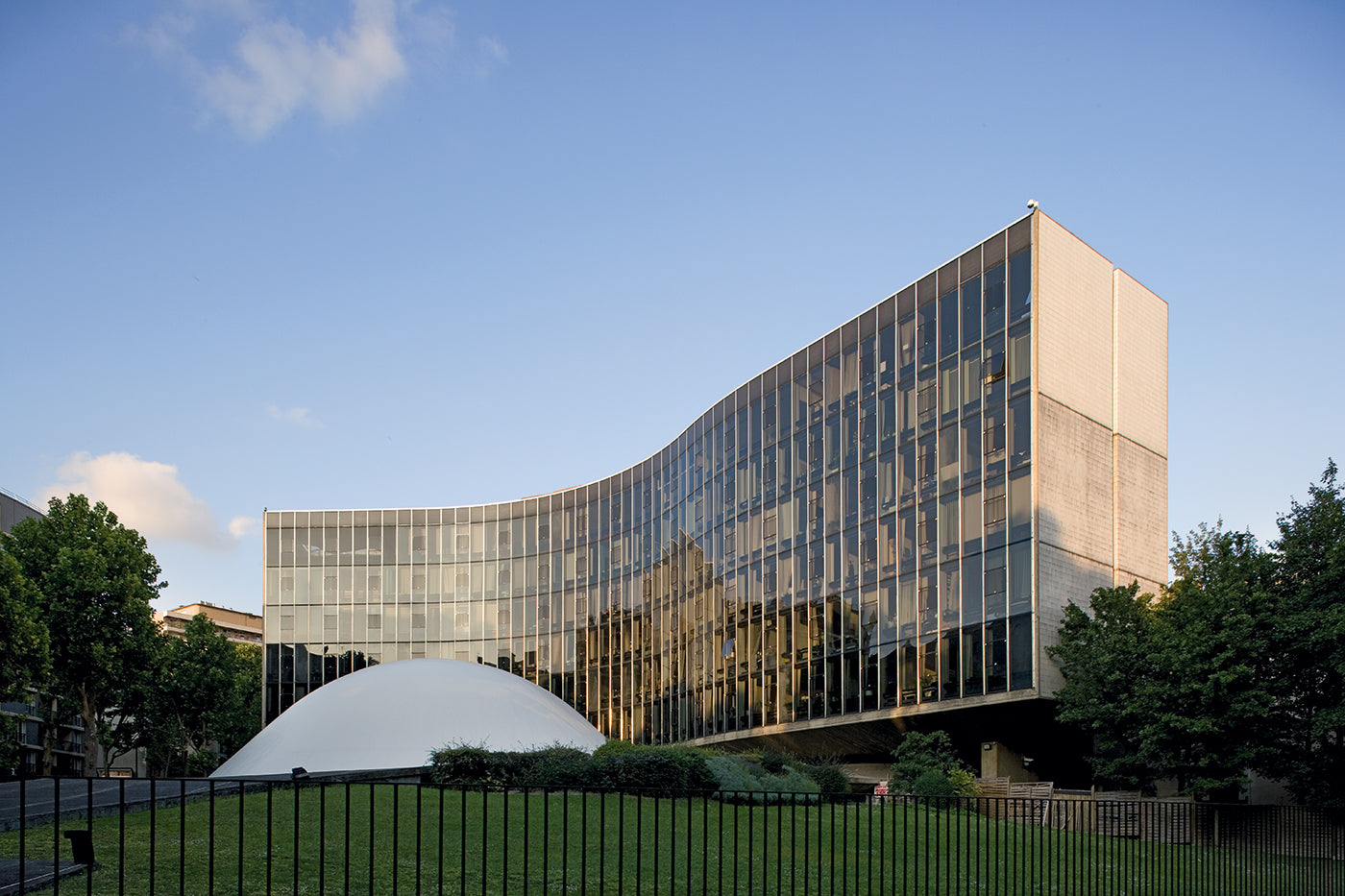
12/2020 architecture & interior
The architectural voice of Brazil, Oscar Niemeyer worked until the age of 104. Known as a lover of life, political and economic equality, and constructing iconic forms—the Pritzker Prize winner turned his gestural sketches on cocktail napkins into realized structures around the world. His political ties meant he fled Brazil for his safety, later finding peaceful sanctuary in France, a place where he could embrace his vision. Niemeyer’s storied career spanned over 78 years, 600 projects, and a delightful autobiography aptly titled The Curve of Time.
Few people have lived longer or accomplished more than Niemeyer. Known for his fresh take on Modernism, which married humanism with sensual forms. His contributions to the urban landscape and social discourse made him one of the most important figures in architecture and a pioneer of contemporary Brazilian design. Born on December 15, 1907, in Rio de Janeiro and completed his early studies at the Colégio Santo Antônio Maria Zaccaria in 1928. He then attended the Escola Nacional de Belas Artes, earning his architectural engineering degree in 1934. In 1935, he took his first job in the office of Lucío Costa.


The luminous domed interior of Communist Party Headquarters in Paris includes curved conference tables and a forest green floor. Niemeyer wanted to create a space that championed his version of social equality and progressiveness. (Photo: Leonardo Finotti, The Tale of Tomorrow)
He became an integral part of Costa’s team, traveling to New York to work on the Brazilian Pavilion for the 1939 World’s Fair. The young architect was honored with the keys to the city. Having forged political relationships, he joined the Brazilian Communist Party in 1945 and continued to actively support the organization until his death in 2012. This political affiliation led to periods of exile from his home country. But, his work as a solo architect took off during this period.
In 1947, he returned to New York as a member of the International Committee of Architects in charge of the development of the U.N. Headquarters with Le Corbusier. He also received the title of Honorary Member of the American Academy of Arts and Sciences in 1949. Seven years later, Brazilian President Juscelino Kubitschek commissioned Niemeyer to oversee what would become the most important project of his career—the master plan for Brasília, the new capital of Brazil. He spent the next few years furiously completing one iconic building after the next for the future political center of the country.
A military coup in the 1960s forced him to relocate to Europe. He settled for a time in Paris, opening a practice there and completing the French Communist Party Headquarters in an act of political defiance. When political tensions eased in the 1980s, he returned to his home country. Niemeyer continued to bring designs sketched on napkins to life until he died in 2012. His uncanny talent and joie de vivre will forever set him apart from his contemporaries. Not many individuals have the opportunity to say they designed and built a capital city, and this will undoubtedly his grandest milestone. But his time in France gave birth to a structure that symbolizes both his approach to design and politics, that was the Communist Party Headquarters in Paris.


The Parisian headquarters stand as a testament to way he wanted spaces to connect people and encourage dialogue. Wrap-around, built-in seating with leather cushions extends the concrete walls into the space. The partially buried dome of the conference hall doubles as a curved wall in the corridor. (Photos: Leonardo Finotti, The Tale of Tomorrow)
The architect began work on the headquarters for the French Communist Party the next year. As a political statement, he chose to take on the project at no charge. In 1971, Niemeyer completed the first phase of the job—an undulating six-story building draped in glass curtain walls. The softly curved modernist monument seems to reference a flag blowing in the wind. After the completion of this more utilitarian part of the complex, Niemeyer moved on to the partially buried dome located in the gardens out front.
The mysterious white dome, completed in the early 1980s, encloses a spectacular chamber for the party’s Central Committee meetings. A universe of thousands of white aluminum panels cloaks the domed chambers in an ethereal, diffused light. The celestial underground interior experience serves as a fitting homage to the party and its possibilities it presented in that era. He left the world with a signature style, one that often involved monumental projects which represented the optimistic and ambitious visions of a country and organization. The French Communist Party Headquarters doesn't ooze in stature like some of his other commissions, but over time, this structure came to encompass everything he stood for ideologically and architecturally.
Looking at past dreams, The Tale of Tomorrow is a call to reclaim our future.












